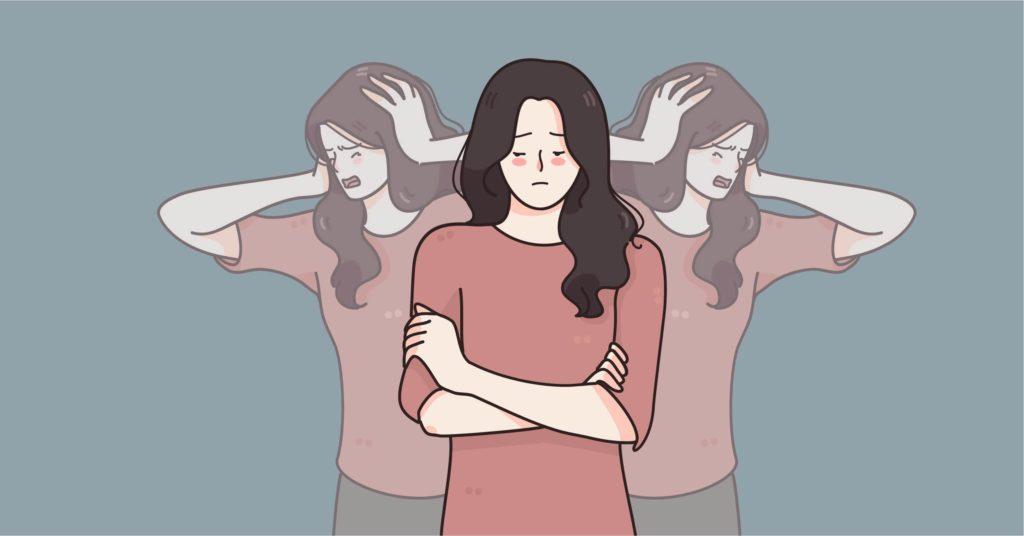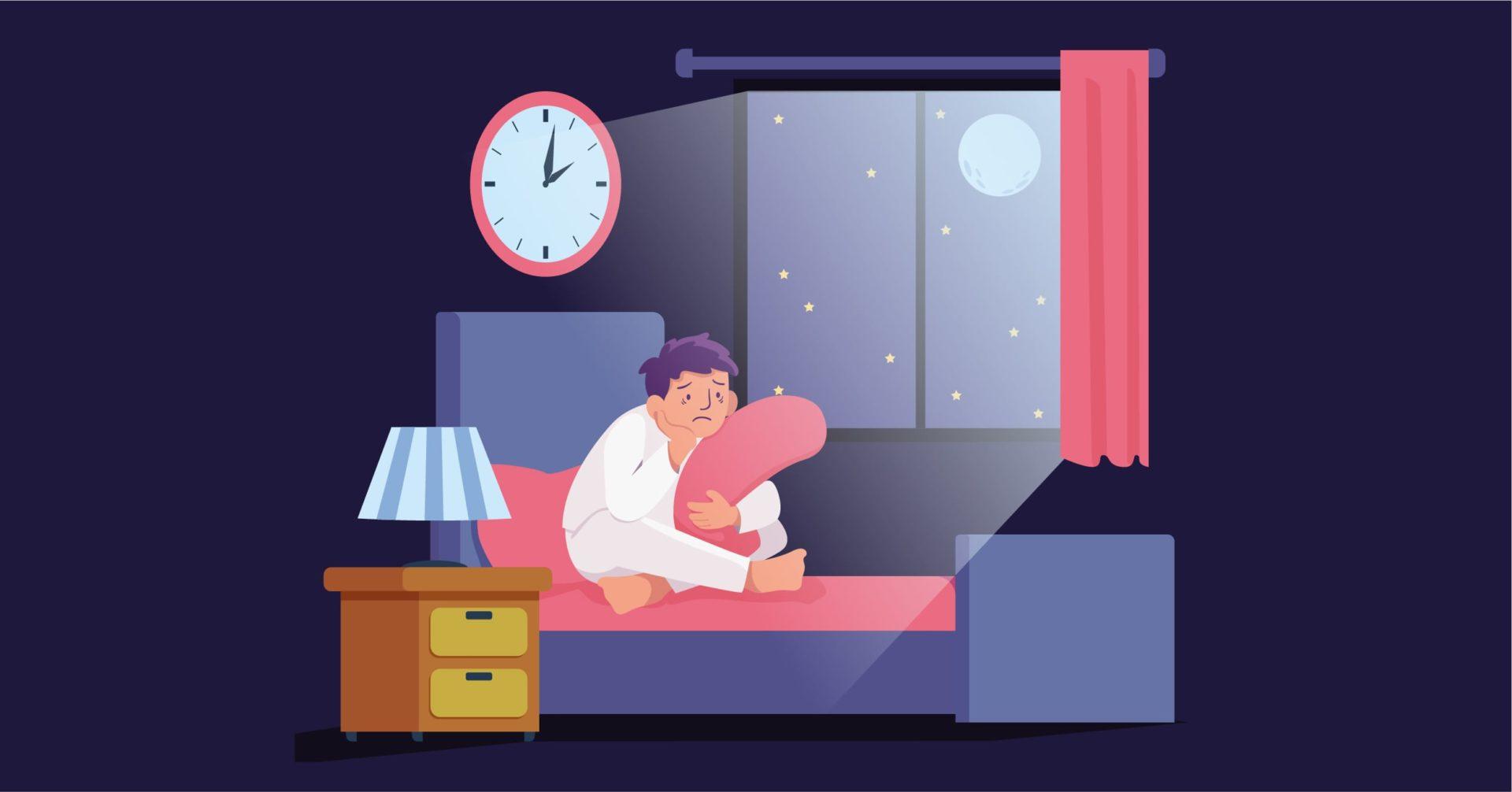Overview
Persistent Depressive Disorder, also known as Dysthymia, is a depressive disorder with long-term or chronic symptoms. Characterized by depressive symptoms of varying severities, the disorder was initially put forth as a personality disorder due to the chronicity associated with its manifestation.
It differs from major depressive disorder in that symptoms do not appear episodically, but are rather experienced as a constant state. Owing to the nature of the symptoms, Persistent Depressive Disorder can have a considerable impact on daily functionality and cause severe impairment, including a risk of death by suicide.
Individuals susceptible to Persistent Depressive Disorder are predominantly female. The aetiology of the disorder is often explained through the biopsychosocial model, involving biological, social, and psychological correlates.
Temperamental characteristics of neuroticism and introversion are often associated with the occurrence of the disorder.
Treatment for Persistent Depressive Disorder typically combines psychotherapeutic and pharmacotherapy modalities, and is largely dependent on the symptoms experienced by the individual. Lifestyle modifications may also be suggested in tandem with psychotherapy and medication.
Signs and Symptoms
The signs and symptoms of Persistent Depressive Disorder may include:
- Persistent depressed mood
- Loss of interest in daily activities or hobbies
- Feelings of tiredness or fatigue
- Disturbance in eating habits (overeating or loss of appetite)
- Disturbance is sleeping pattern (oversleeping or sleeplessness)
- Inability or difficulty concentrating
- Indecisiveness
- Feelings of hopelessness
- Irritability
- Low self-esteem
Risk Factors
Depressive disorders are generally more prevalent among females, and this stands true for Persistent Depressive Disorder as well. Demographic factors such as belonging to high income countries and being unmarried have also been considered.
The onset of the disorder is considered to be in early childhood, adolescence, or early adulthood, but the disorder may be diagnosed later in life.
Personality disorders are considered more likely to occur as comorbidities in cases of early onset Persistent Depressive Disorder. As opposed to non-chronic major depressive disorder, there is a greater likelihood of an early onset of symptoms among those with chronic Persistent Depressive Disorder.
The aetiology of Persistent Depressive Disorder is largely based in the interaction of biological, social, and psychological causal factors.
While more conclusive findings are required in terms of the genetic aetiology of the disorder, some studies have found that environmental factors were likely to play a stronger role in the occurrence of Persistent Depressive Disorder.
Genetic factors involved in this development of the disorder may be similar to those involved in the development of major depressive disorders, suggesting the likelihood of first-degree relatives with depressive disorders being a possible correlate.
Biological factors also take into consideration neuroanatomical and neurochemical correlates, usually embodied by abnormalities in the production and regulation of serotonin.
Anomalies of the immune system, hormonal dysregulation, as well as psychophysiological and sleep-related abnormalities are also speculated as possible risk factors.
Due to the high co-occurrence of the disorder with major depressive disorder, and frequent comorbidities the concrete determination of biological factors associated with the disorder has proven to be challenging.
Individual temperament is also an important variable to be considered in the aetiological make-up of Persistent Depressive Disorder.
Factors such as being high on neuroticism (having a greater disposition to negative emotions), low extraversion, poor self-image and sense of self-worth, and higher anxiety may be observed among individuals presenting with Persistent Depressive Disorder.
Individuals with the disorder are more likely to present with submissive, avoidant, and hostile interpersonal styles.
Environmental factors, such as the experience of severe childhood trauma, loss of a loved one, separation among parents, and other life events that play part in negatively impacting the individual, may also be responsible for the development of the disorder. Individuals with the disorder may have less social support.
Individuals with Persistent Depressive Disorder are at a greater risk of comorbidities such as anxiety disorders, substance use, and personality disorders compared to those with major depressive disorder. However, it is also common for the two to occur concomitantly.
Diagnosis
Due to the chronic nature of symptoms of Persistent Depressive Disorder, it is possible that there is a lower probability of individuals with the disorder to approach clinicians for a formal diagnosis, as they may perceive it as a part of who they are.
The diagnostic process involves ruling out medical or biological conditions that may be responsible for symptomatology, involving implementation of laboratory tests.
It is vital to take a thorough clinical history, mapping out the course of depressive symptoms. A timeline may be constructed in order to more accurately determine the patient’s experiences.
Structured diagnostic interviews and valid screening tools may be used, but it is of importance to ensure that they assess dysthymia symptoms by inquiring about depressive symptoms in vegetative states.
The General Behavior Inventory is considered to be a good option for the assessment of chronic mood disorders, and the Cornell Dysthymia Rating Scale focuses specifically on symptoms of dysthymia.
The DSM-5 mentions the following criteria for the diagnosis of Persistent Depressive Disorder:
- Depressed mood for most of the day, for more days than not, as indicated by either subjective account or observation by others, for at least 2 years.
Note: In children and adolescents, mood can be irritable and duration must be at least 1 year. - Presence, while depressed, of two (or more) of the following:
- Poor appetite or overeating.
- Insomnia or hypersomnia.
- Low energy or fatigue.
- Low self-esteem.
- Poor concentration or difficulty making decisions.
- Feelings of hopelessness.
- During the 2-year period (1 year for children or adolescents) of the disturbance, the individual has never been without the symptoms in Criteria A and B for more than 2 months at a time.
- Criteria for a major depressive disorder may be continuously present for 2 years.
- There has never been a manic episode or a hypomanic episode, and criteria have never been met for cyclothymic disorder.
- The disturbance is not better explained by a persistent schizoaffective disorder, schizophrenia, delusional disorder, or other specified or unspecified schizophrenia spectrum and other psychotic disorder.
- The symptoms are not attributable to the physiological effects of a substance (e.g., a drug of abuse, a medication) or another medical condition (e.g. hypothyroidism).
- The symptoms cause clinically significant distress or impairment in social, occupational, or other important areas of functioning.
Note: Because the criteria for a major depressive episode include four symptoms that are absent from the symptom list for persistent depressive disorder (dysthymia), a very limited number of individuals will have depressive symptoms that have persisted longer than 2 years but will not meet criteria for persistent depressive disorder.
If full criteria for a major depressive episode have been met at some point during the current episode of illness, they should be given a diagnosis of major depressive disorder. Otherwise, a diagnosis of other specified depressive disorder or unspecified depressive disorder is warranted.
The diagnosis of the disorder may be specified on the basis of the temperamental features, features or time of onset, state of remission, symptomatic criteria, and severity.
Treatment
Treatment modalities for Persistent Depressive Disorder are often made up of psychotherapy and pharmacotherapy. The combination of the two is considered to have increased efficacy and lead to positive effects.
The use of psychotherapy to manage maladaptive thought processes and dysfunctional social attitudes is paramount in the treatment of Persistent Depressive Disorder. The Cognitive-Behavioral Analysis System of Psychotherapy refers to a modality developed in order to specifically target long-term depressive symptoms.
Other more commonly used forms of therapy, such as Interpersonal Psychotherapy and Cognitive Behavioral Therapy may also prove effective. Many individual differences come into play in the selection of a particular therapeutic approach. The choice may be affected by the patient’s history, severity of symptoms, as well as how well or poorly they respond to a particular treatment style.
The first line of pharmacotherapy in the context of depressive disorders is typically an SSRI (Selective Serotonin Reuptake Inhibitor) antidepressant. TCAs (Tricyclic Antidepressants) or SNRIs (Selective Norepinephrine Reuptake Inhibitors) may also be considered.
Overall lifestyle modifications may also be suggested, such as the inclusion of healthier habits, exercise, healthy eating, relaxation and adequate sleep, and social interaction. These can aid the long term alleviation of the patient’s well-being.
Differential Diagnosis
1. Major depressive disorder: If the depressed mood plus two or more symptoms meet the criteria for a persistent depressive episode for 2 years or more, then the diagnosis of persistent depressive disorder is made. The diagnosis depends on the 2-year duration, which distinguishes it from episodes of depression that do not last 2 years.
2. Psychotic disorders: Depressive symptoms are a common feature of chronic psychotic disorders like schizoaffective disorder, schizophrenia, delusional disorder. A separate diagnosis of persistent depressive disorder is not made if the symptoms occur only during the course of the psychotic disorder.
3. Depressive or bipolar and related disorder due to another medical condition: Persistent depressive disorder must be distinguished from a depressive or bipolar and related disorder due to another medical condition. The diagnosis of depressive or bipolar and related disorder due to another medical condition is given if the mood disturbance is judged, based on history, physical examination, or laboratory findings, to be attributable to the direct pathophysiological effects of a specific, usually chronic, medical condition.
4. Substance/medication-induced depressive or bipolar disorder: A substance/medication- induced depressive or bipolar and related disorder is distinguished from persistent depressive disorder when a substance such as a drug of abuse, a medication is related to the mood disturbance.
5. Personality disorders: Ofte, there are comorbid personality disorders. When the individual meets the criteria for both persistent depressive disorder and a personality disorder, both diagnoses are given.
Comorbidity
Individuals with persistent depressive disorder are at higher risk for psychiatric comorbidity in general, and for anxiety disorders and substance use disorders in particular.
Specialist
Primary healthcare providers may recommend psychiatrists or clinical psychologists upon initial assessment of physical testing and clinical history.
Depending on the severity of symptoms and their functional consequences, treatment modalities can be decided. Healthcare professionals with adequate training and experience in respective forms of psychotherapy may be involved in patient management.
In Conclusion
This persistent kind of depression, also known as dysthymia, can make you feel unmotivated, despondent, unproductive, and low in self-esteem.
There’s no sure way to prevent persistent depressive disorder. Because it often starts in childhood or during the teenage years, identifying children at risk of the condition may help them get early treatment.
Take action to reduce stress, strengthen your resilience, and improve your self-worth.
To get through difficult times, reach out to family and friends, especially during times of crisis. Get professional care as soon as a problem arises to stop symptoms from getting worse. To assist prevent a return of symptoms, think about receiving long-term maintenance treatment.
Get in touch with us today.





